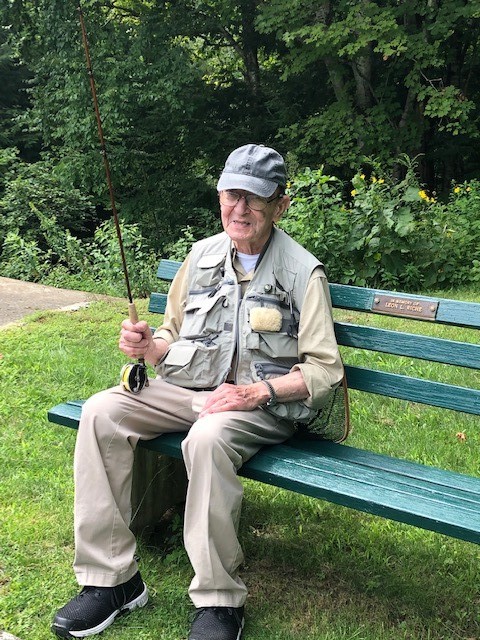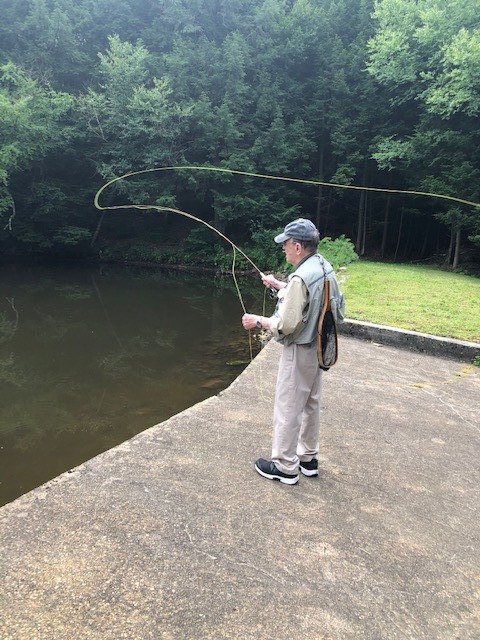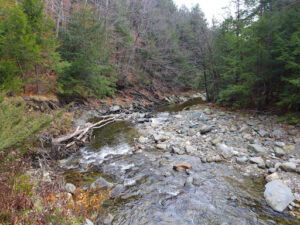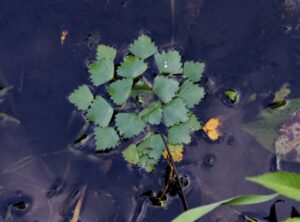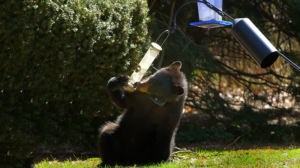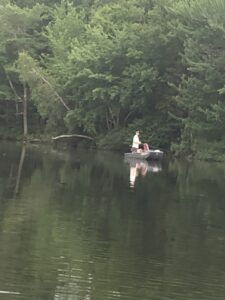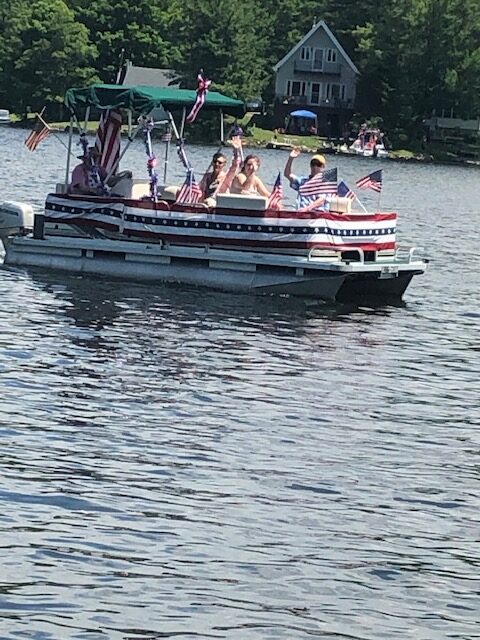Continuing the Trump Administrations efforts to increase recreational access to public lands, U.S. Secretary of the Interior David L. Bernhardt recently announced the historic opening and expansion of over 850 hunting and fishing opportunities across more than 2.3 million acres at 147 national wildlife refuges and national fish hatcheries. This is reputed to be the single largest expansion of hunting and fishing opportunities by the U.S. Fish and Wildlife Service in history.
“On the heels of President Trump signing the most significant conservation and recreation funding in US history, (see my August 16 column) providing nearly $20 billion over the next 10 years to fix and conserve the American people’s public lands, the Trump Administration has now made an additional 2.3 million acres accessible to new hunting and fishing opportunities,” said Secretary Bernhardt. “We continue to take significant actions to further conservation initiatives and support sportsmen and women who are America’s true conservationists.”
On top of last year’s expansion of 1.4 million acres for new or expanded hunting and fishing opportunities, this proposal would bring the Trump Administration’s total expansion to over 4 million acres nationwide.
In Massachusetts, the following would be affected:
- Assabet River National Wildlife Refuge (Hudson): Open duck, geese, coot, bear, coyote and fox on new acres and acres already open to other hunting, and expand existing big game hunting to new acres.
- Oxbow National Wildlife Refuge (Located in several towns 40 miles west of Boston): Open coyote, fox and bear hunting on new acres and acres already open to other hunting, and expand existing migratory bird, upland game, and big game hunting to new acres and expand method of take for existing upland game and big game hunting to further align with state regulations.
- Great Meadows National Wildlife Refuge (Located in several towns 20 miles west of Boston): Open wild turkey, coyote and bear hunting on new acres and acres already open to other hunting, and expand existing migratory bird and big game hunting to new acres.
- Berkshire National Fish Hatchery (located in New Marlborough): Open the hatchery lands to sport fishing.
I attempted to get clarification of exactly where anglers can fish on the hatchery lands from the Hatchery Manager but to date no response has been received. Surely, fishing in the hatchery itself will not be allowed, except for the special youth fishing derbies held by the Friends of the Berkshire National Fish Hatchery group in its lower pool. My guess is it allows fishing on a nearby stretch of the Konkapot River which the hatchery owns. I’ll keep trying to get that information for you. As of this writing, there have been no public announcements concerning these recreational accesses by the Baker/Polito Administration.
According to Secretary Bernhardt, the rule also continues the effort from last year’s rule toward revising refuge hunting and fishing regulations, so they more closely match state regulations where the refuge is located. Whenever refuge regulations depart from state regulations for safety or conservation compatibility reasons, these extra regulations are as consistent as possible across all refuges in a given state. Interior Dept. worked closely with the states during the rule making process.
Now, if we can get President Trump to not support the proposed Pebble Mine, a massive mineral extraction mining development in Alaska’s Bristol Bay, it would be wonderful. Bristol Bay is home to one of the most important wild salmon fisheries on Earth. Annual sockeye salmon returns there top 60 million fish, feeding a wide variety of wildlife and human communities, from grizzly bears to Alaska Native families to a globally important commercial fishery.
If constructed, Pebble would be one of the world’s largest open pit copper/gold/molybdenum mines, with an earthen dam 60-stories tall that would ultimately hold up to 10 billion tons of toxic tailings and contaminated water — forever. The mine and tailings lake would sit just north of Iliamna Lake, the largest lake in Alaska and one of the most important sockeye salmon nurseries in the world.
Hanging in the balance is a $1.5 billion-a-year salmon fishing economy and an important subsistence food source for Bristol Bay communities. Commercial salmon fishing in Bristol Bay employs more than 14,000 people every year, from seasoned boat captains to young deckhands paying their way through college to workers in processing facilities. Sportfishing tourism brings in at least $75 million a year to the local economy and draws fishermen and women from around the world. Subsistence salmon fishing for 31 federally recognized Alaska Native tribes in Bristol Bay continues a tradition several thousand years old. Salmon is a critical food source — up to 65% of protein consumed in rural Alaska communities comes from salmon.
According to a recent news release by the American Sportfishing Association (ASA), the Army Corps of Engineers has decided Pebble Mine can’t be permitted as proposed. Pebble Limited Partnership, the mine’s developer, must now outline how it will address the proposed mine’s damage to nearby wetlands and waterways. Within 90 days, the company must show how it will compensate for harming more than 2,800 acres of wetlands, 130 miles of streams and more than 130 acres of open water within Alaska’s Koktuli River Watershed.
The Army Corps’ decision is a pivotal moment in the fight against the Pebble Mine,” said Chad Tokowicz, ASA’s Inland Fisheries Policy manager. “By denying the current proposal, the Army Corp has acknowledged what ASA and many other outdoor recreation groups have been saying for years: Pebble Mine is simply the wrong mine in the wrong place. While the fight isn’t completely over, we’re glad that the Army Corps has brought to light the insurmountable risks the mine poses, creating a significant barrier to the project moving forward.”
Trout Unlimited President Chris Wood called it, “ A day to celebrate”: “We look forward to moving the Bristol Bay conversation beyond Pebble and toward permanent protections that ensure this special place, and all the communities, people, and fisheries that depend on it, can continue to thrive”.
“For more than 15 years, Trout Unlimited has helped to connect local people, commercial fishermen and women who rely on the region’s salmon fisheries, as well as anglers and hunters across America, to protect Bristol Bay. We applied the best of what TU has to offer: organizing tools, science-backed policy expertise, a nationwide grassroots network, and legal acumen.”
Big brown trout caught on fly out of Deerfield River
Congratulations to Deerfield River guide Chris Jackson for catching a 34-inch brown trout last Monday evening out of the Deerfield River. The fish weighed approximately 18 lbs on a digital scale, (subtracting the weight of the net). Using a 5-weight Sage One switch flyrod with a RIO 5-weight switch line, Nautilus reel and 2x tippet, he was fishing at night dead drifting and slow swinging his version of a Flaggs Smelt fly.
Chris is a Deerfield River guide (https://chrisjacksonflyfishing.com/) as is fellow guide Brian Lynch (of Pheasant Tail Tours – https://www.pheasanttailtours.com/) who netted the fish for him. According to Brian, they were “putting in a night shift” after a long day of guiding. They said the fish was released and is swimming in the upper Deerfield River today. It’s the biggest fly-caught trout anyone has ever heard of from the Deerfield, possibly the biggest fly-caught brown trout ever taken in New England.
Jackson is a Deerfield River Watershed Trout Unlimited (DRWTU) board member who showed off what years of experience on the Deerfield River can produce. His years of dedicated advocacy and conservation work to improve the Deerfield’s wild trout fishery is certainly paying off. So, if you are thinking about hiring a guide to drift fish the Deerfield………..
Many thanks to Michael Vito, President of the Deerfield River Watershed Chapter of TU for sharing the enclosed photo and story with us.


